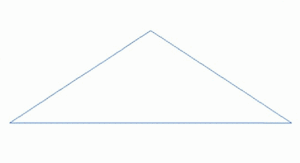
A fractal landscape or fractal surface is generated using a stochastic algorithm designed to produce fractal behavior that mimics the appearance of natural terrain. In other words, the surface resulting from the procedure is not a deterministic, but rather a random surface that exhibits fractal behavior.[1]
Many natural phenomena exhibit some form of statistical self-similarity that can be modeled by fractal surfaces.[2] Moreover, variations in surface texture provide important visual cues to the orientation and slopes of surfaces, and the use of almost self-similar fractal patterns can help create natural looking visual effects.[3] The modeling of the Earth's rough surfaces via fractional Brownian motion was first proposed by Benoit Mandelbrot.[4]
Because the intended result of the process is to produce a landscape, rather than a mathematical function, processes are frequently applied to such landscapes that may affect the stationarity and even the overall fractal behavior of such a surface, in the interests of producing a more convincing landscape.
According to R. R. Shearer, the generation of natural looking surfaces and landscapes was a major turning point in art history, where the distinction between geometric, computer generated images and natural, man made art became blurred.[5] The first use of a fractal-generated landscape in a film was in 1982 for the movie Star Trek II: The Wrath of Khan. Loren Carpenter refined the techniques of Mandelbrot to create an alien landscape.[6]
- ^ "The Fractal Geometry of Nature".
- ^ Advances in multimedia modeling: 13th International Multimedia Modeling by Tat-Jen Cham 2007 ISBN 3-540-69428-5 page [1]
- ^ Human symmetry perception and its computational analysis by Christopher W. Tyler 2002 ISBN 0-8058-4395-7 pages 173–177 [2]
- ^ Dynamics of Fractal Surfaces by Fereydoon Family and Tamas Vicsek 1991 ISBN 981-02-0720-4 page 45 [3]
- ^ Rhonda Roland Shearer "Rethinking Images and Metaphors" in The languages of the brain by Albert M. Galaburda 2002 ISBN 0-674-00772-7 pages 351–359 [4]
- ^ Briggs, John (1992). Fractals: The Patterns of Chaos : a New Aesthetic of Art, Science, and Nature. Simon and Schuster. p. 84. ISBN 978-0671742171. Retrieved 15 June 2014.